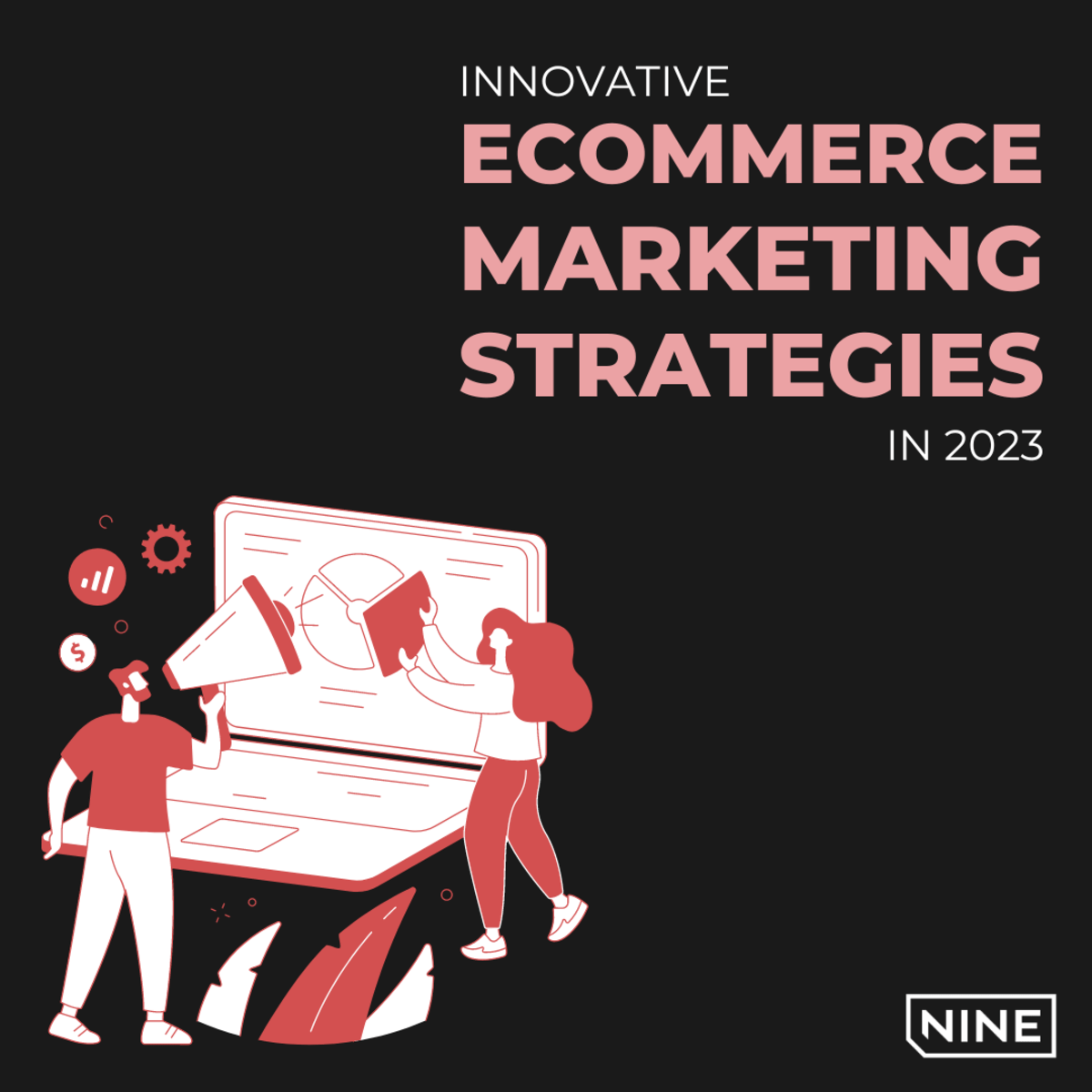
With so many brick n mortar retailers and online-only start-ups entering the market, having an effective commerce marketing strategy is no longer an option. To compete, you need to stay up to date on the latest ecommerce marketing trends and implement them into your marketing strategy.
Success no longer means having a straight-line approach to your ecommerce marketing strategy. With eyeballs on many websites and apps in a single hour, your approach to digital marketing means you need to be visible across many platforms-several times per day.
Creating A Robust Ecommerce Marketing Strategy
What once was three impressions to capture attention then became seven impressions and is now much more than that; you can't expect to make a post or run a PPC ad and call it a day. If we adhere to Gary Vaynerchuk's recent advice, we should make 17 pieces of content per day if we want to compete in such a competitive landscape.
That's a lot, and there's no question it can seem overwhelming. Very few people have the creative juice necessary to put that much effort into advertising and marketing, but it doesn't have to be resource-heavy. It needs to be strategic, which is what this article will cover.
In this article, we will cover the latest ecommerce marketing strategies and show you the order in which you should approach these strategies and how to tie them all together.
Part 1: Become a Content Authority
At the forefront of your ecommerce marketing strategy is getting ahead of this fast-moving content-heavy world. Waking up and deciding what content to produce doesn't work. Allocate time to create a list of topics around your expertise. Once you have your list, please put it in order of priority and start producing content.
What type of content should you produce? To start, we suggest long-form content. When you begin with long-form content, you can chop it into 30-pieces of short-form content. Instead of waking up and deciding on your Instagram post, wake up to a scheduled 1-minute video customized for TikTok, Instagram, and YouTube Shorts.
Tip: Don't be afraid to talk about things more than once. Repetition is one of the most critical parts of content creation.

Create a Podcast
Covid-19 turned everyone into a podcast host. Or at least way. People are still catching on to podcasts, and there's plenty of room for industry experts to discuss what's relevant and helpful to a target audience. Even if you don't turn into the next Lewis Howes, you can capture an audience through this medium. Especially with existing customers who want to hear the voice of a brand.
If you are comfortable with video, turn these podcasts into a multi-streamed marketing channel you use on YouTube and shorter-form video formats.
Podcasts are a great way to promote your products while the customer is in a relaxed state. Whereas traditional advertisements create a trigger that makes consumers turn away, podcasts where hosts discuss their products in a conversation keep the customer engaged. Through this medium, brands like BulletProof captured much trust and market share.
Blog Articles
Blog articles must be a content marketing strategy at the top of your list. Having a solid blog content strategy is essential for two key reasons.
Internal links push product pages up in the search engines: Let's say you sell car engines and are stuck on page two for your product. Creating blog article content around car engines with an internal link to your product page can push you up in search. Here's how;
You wrote an article called "how to keep your car engine running strong." This page links your car engine product page with the "car engine." The article ranks in the search engine, and you receive 100 unique visitors each month to the page. Google recognizes the internal links on the page (link equity) and gives your product page pass-through value.
Second, your articles that cover car engines add to Google's understanding of what subject you are an expert on. Topic authority furthers your credibility and, over time, improves your rankings for any pages where the chief topic is car engines.
Blog Content is the raw materials for social media: Your car engine tips article might come out to approximately two thousand words and include fifteen tips. These fifteen tips become a unique social media post, used as scripts for a YouTube tutorial and through various social media stories.
But you can't just push out mediocre content and hope to make a splash. You compete against the entire internet, and if you want your blog articles to rank, you need to take them seriously. Here are 6-tips to ensure your blog content doesn't get lost on the world wide web.
Provide an expert's unique experience on the subject.
Research other articles to ensure full topic coverage.
Answer common internet questions about the topic.
Keep paragraphs and sentences as short as possible.
Add visual elements to make the page more exciting.
Include several calls to action where they naturally fit.
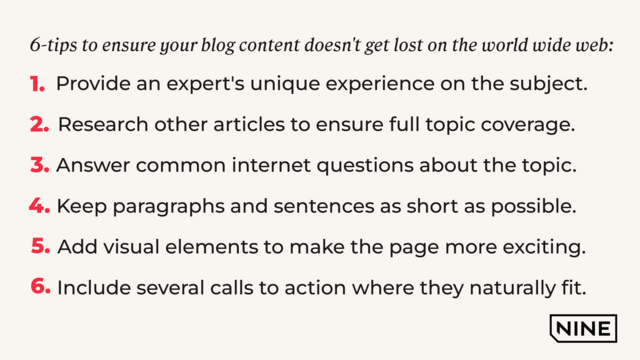
Step Up Your Social Media Marketing
Being present on social media is essential, but how do you expect to capture new customers and retain existing ones if people scroll past your posts? You must use social media to bring your ecommerce website to life! Evaluate what you currently do on social media and consider how you can step up your game.
Can you dedicate office space exclusively to creating social media content?
Are you testing every social media platform to determine marketing viability?
Are you limiting yourself to organic instead of investing in paid marketing such as a TikTok or Facebook ad?
Create a monthly meeting about how to promote your ecommerce store through social media. Continue to allocate time, money, and resources to this marketing method so that it becomes an integrated part of your organization.
Create Custom Email Marketing Campaigns
Suppose you do any of the abovementioned marketing activities (hopefully all). In that case, you have everything you need to create exciting email campaigns that summarize everything you do.
Approach email marketing as if you are speaking specifically to a loyal customer. The customers who open emails are brand new or feel connected to your business. Thankfully, with email campaign segmentation and marketing automation, we can split these customers into different groups and create custom emails for each customer journey stage.
Create a Strategic SMS Marketing Campaign
You would think that since SMS marketing has existed for 20 years, it would be old news, but SMS is more relevant now than ever. What started as a fast way to communicate when you were in a time crunch is now the standard method of communication. This new regular changes how ecommerce companies use text messaging to promote their business.
An almost pointless means of SMS marketing is blasting a potential customer with a quick pitch. SMS marketing like this screams spam and makes your company appear lifeless and only about the money. Since text messages are a preferred method for having conversations, think of the conversations you can have about your products.
Let's say we are the owners of Vitamix and want to continue a relationship with our valued customers. Here's a relevant text we can send and point them to a resource on our website.
"Hey John, Jason here from The Nine. Have you seen the TikTok video going on around watermelon soup? Here's how you can make it with your Vitamix."
Thanks to advances in SMS, we can now create custom campaigns for a specific audience with similar interests.
Part 2: Start Collecting Data
Now that you have more new eyeballs hitting your site, it's time to learn more about our customers and how we can best serve them in the future. A benefit to being an ecommerce business over having an Amazon store is that you can create datasets that improve future marketing and customer service. Unfortunately, most ecommerce brands do not know what exists and how to use technology to their advantage.
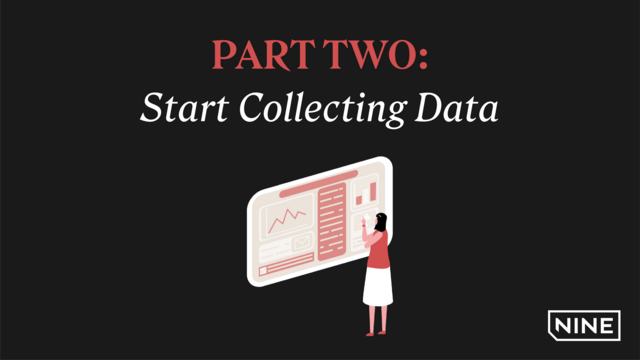
Use a Website Heat Map
You might not have seen them, but in some large retail establishments, some sensors track your every move. They detect the time you spend in space and how you respond to certain stimuli. A website heat map gives you similar information for your online store. But instead of the higher cost and regular maintenance, you can have a heat map for your ecommerce business at a fraction of the cost.
The problem with the heat map is that most ecommerce businesses set it and forget it. They do nothing with the data it provides. That's why we recommend working with an ecommerce agency that helps you understand the data and actions a brand can take. You improve the customer experience, revenues, and other aspects of the business through heat maps.

Capture Customer Feedback
It's easy for an ecommerce brand to capture complaints, but it takes work to capture constructive feedback. But with customer loyalty at an all-time low, brands that are not constantly trying to improve (from a customer perspective) are asking for opponent interference.
Pleasing everyone is impossible, but showing people you are is a big step to winning them over in the long term. To do this, you need a better strategy than a simple pop-up form after they purchase or a blanket email in their spam folder.
Put as much effort into capturing customer feedback as you do to create every other aspect of your marketing plan.
Create Partnerships
In this mission-driven economy, we need to move from thinking about each person as a customer to considering them as partners. They are contributing to the success of your business. If you were to consider every customer as a partner, how would that change your business model?
When you are in a partnership, you are in a relationship. Ask yourself this question; do you know more about the people you are in relation with or somebody you've just met? Your partners will tell you more about their life and what you can do to nurture the relationship.
At REI, partners receive a 10% credit on their account at the end of the year. Also included in their membership (or partnership) are invitations to learning workshops, collaborative non-profit contributions, and special pricing on services and rentals.
People literally "buy in" for the mission and purpose of REI. How can you apply this do-good marketing tactic to your business?
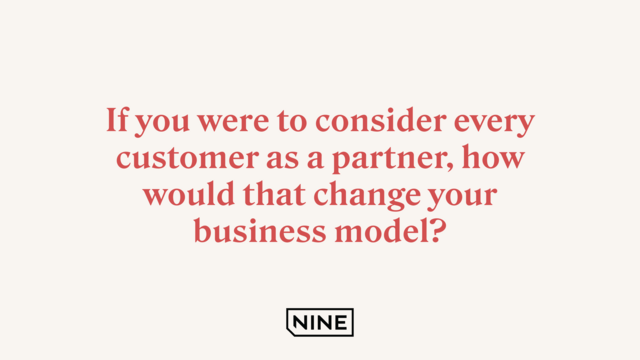
Part 3: Create More Sales
We're now driving traffic and capturing valuable information. Now is the time to see the fruits of our labor. Well, it's not as easy as that, but we have seen a big jump in our ecommerce revenues. To do that, we need to pull the sales stimulating levers.
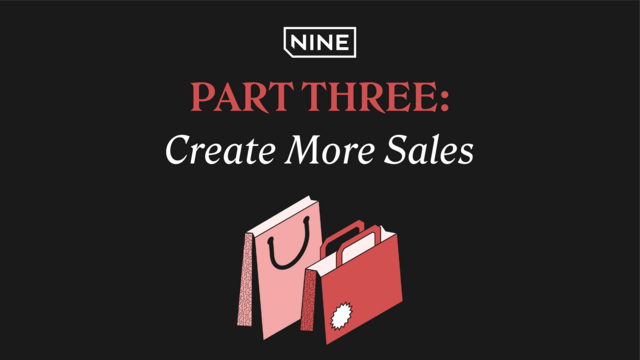
Social Selling
Social selling is when you sell your products on a social media platform. It's meeting the customer where they are and familiarly positioning your products with seamless purchasing functionality. Social selling is a great way to capture a small transaction from a new customer. It's also an excellent way to create product promotions (such as limited edition products) that your existing audience can take advantage of.
TikTok is currently the best platform for social selling, but that doesn't mean you shouldn't have exposure on Facebook, Instagram, and other social ecommerce platforms. Unlike Amazon, these platforms let you capture customer information for future marketing.
Affiliate Marketing
In the early days of affiliate marketing, ecommerce companies experienced much success. So much so that they gave away over half of the purchase to any affiliate marketer, bringing them a new customer. Such an opportunity led to many affiliate marketers following less-than-ideal business practices.
Google and the FCC continue to clean houses with these bad affiliates, and this form of marketing is becoming a more mature industry with advancing technology. Affiliate marketing is in a good place and is a great ecommerce marketing strategy, but only if you curate the list.
Rather than signing up with an affiliate pitch fest, please find your ideal affiliate partners and reach out to them directly. Find blogs, podcasts, YouTube shows, and social media influencers willing to showcase your products for a slice of the profit pie.
Google Shopping & Pay Per Click Marketing
It's competitive, but Google shopping ads and PPC campaigns are still viable options for most ecommerce businesses. To be blunt, you need a reputable digital marketing agency that knows how to identify the keywords with the maximum reach at the lowest cost. A company that monitors your campaign daily determines which keywords to continue with and which to forego.
While Google ads are the most common, you might succeed more with Bing, Yahoo, and the up-and-comer DuckDuckGo. A reputable agency will manage your keywords across all search marketing platforms.
Create An Influencer Campaign
Like affiliates, influencers will showcase your product, but rather than earning a commission; most influencers want to be paid upfront. Influencer marketing is a trend in ecommerce, but don't dive in without knowing what you're getting yourself into or how to escape an unpleasant relationship.
Understand the influencer's engagement on each platform, not just the one they spend the most time on.
Request the total social shares for all similar products they've previously promoted.
Find out if there are testimonials or a means of measuring the financial success of their previous promotions.
Search the internet for their online reputation and make sure their appearance matches who they are on social media.
If it's a long-term engagement, understand the ins and outs of an influencer exclusivity agreement.
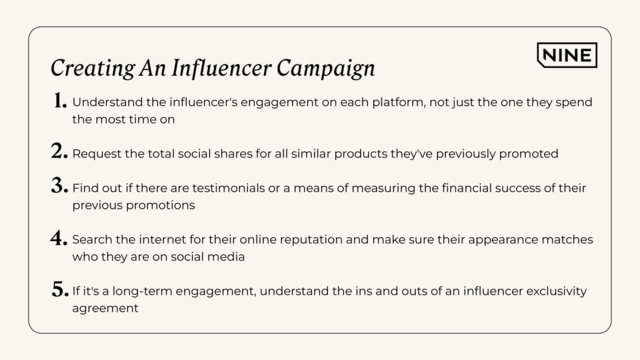
Optimize Your Upselling System
Marketer Jay Abraham states that there are three ways to grow a business. One of which is by increasing the average transaction size. Once someone visits your site, there are many upselling opportunities, and knowing when and where to pitch further purchases is critical to your ecommerce success.
From the home page to the checkout page, look at ways (and tools) that help you sell more of the right products to the right customer.
Step 4: Retain More Customers
Another of Jay Abraham's three ways to grow a business is by increasing customer transaction frequency. It's impossible to accomplish this without focusing on customer retention. Your customer retention rate is vital to your company's success, and essential question buyers ask when you eventually look to sell your ecommerce site.
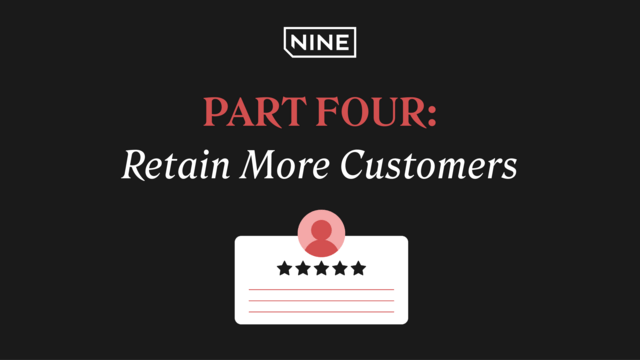
Retargeting
Despite recent policy changes, retargeting is alive and well. However, it looks different and requires continuing a conversation rather than pushing products down a customer's mouth.
Retargeting campaigns are those ads you see on social media and websites as a banner or in the apps you use on your phone.
Create a Virtual Conference
The business has moved online, and many conferences are now on a computer screen rather than in-person. While this may not always be the case, the definition of "conference" has forever changed. Have you considered holding a virtual conference for your business?
A conference is a great way to create associations between your ecommerce website and thought leaders worldwide. These conferences have a low barrier to entry, and ticket holders can pick which sessions to attend. Hosting a virtual conference where the spotlight isn't on your brand puts your good foot forward. Still, it presents the opportunity to showcase your products when the right opportunity presents itself.
Invest in The Packaging Experience
There used to be a bit of excitement when receiving a package. But the magic has dissipated with online delivery being a daily experience.
Not every box that shows up goes without excitement. Think about quarterly subscription boxes that you open without knowing the treasures inside. These unique packaging experiences create an endorphin release that triggers a habitual feeling we want more of.
One of the most significant ways to stand out from the competition is how your package arrives to the consumer. What can you do to make your package more exciting when a customer opens it? How can you create the habitual feeling without giving away what's coming? Figure this out, and you will see a big jump in customer retention.
Add A Personal Touch
Opportunity is everywhere, and most marketers use it to target the right people at the right time. Another way to leverage marketing personalization; you can create a personal touch.
RedCon1 is a brilliant example of this with their personalized thank you videos. They've recorded videos thanking thousands of names. When the name populates through the checkout process, it attaches a video that appears to be curated only for this customer.
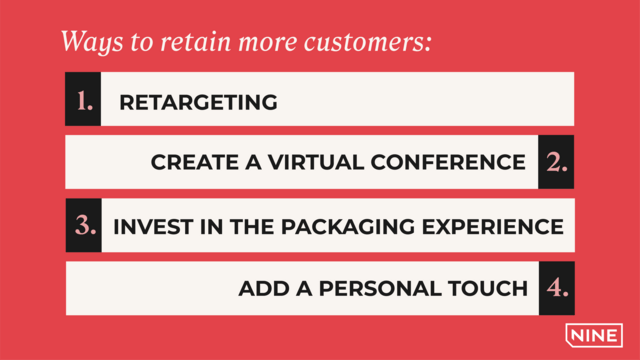
Step 5: The Future Starts Now
If we look at ecommerce through the eyes of Stephen Covey's four quadrants, we need to spend a portion of our time in the not urgent/important category. Looking at the future of ecommerce and allocating some of our financial and team resources to future-proofing our business is a brilliant idea.
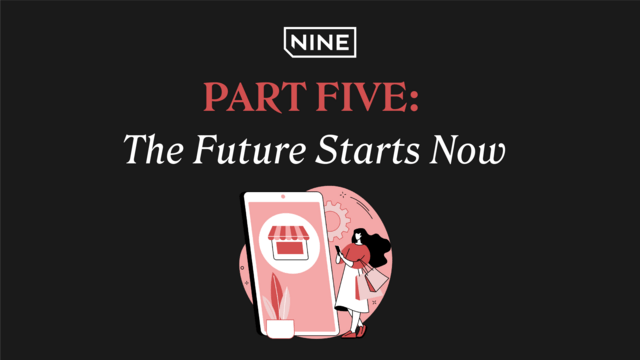
Start Thinking Web 3.0
Ecommerce on web 3.0 will be visually stunning. It will engage and be much more like shopping in a physical store. Ecommerce brands that start incorporating web 3.0 into today's business will be ready when the transition occurs.
To put yourself into the web 3.0 mindset, consider how you can make your product pages more like real life. Any advancements in 3d renderings, videography, and other sensory experiences that you can use now, do so.
While most people do not yet own an Oculus headset, they will sooner than you think. Aside from gaming, online shopping might be the most crucial reason for VR technology. People want to make informed purchasing decisions, and if virtual reality helps you make the right choice, they are a worthwhile investment.
Be Ready For Digital Currencies
Digital currencies are perhaps the fastest-moving part of web 3.0. Whether they are a good stock investment is debatable, but the use of blockchain technology, including cryptocurrency and NFTs (non-fungible tokens), is undeniable. The younger generation chooses this currency to buy and sell products.
Early adopters of cryptocurrency payments may gain a set of loyal followers they didn't have in their original business strategy.
Let's Turn This Dream Strategy Into A Reality
The Nine is a strategy-first ecommerce agency that uses the latest website development and digital marketing strategies to help our clients see significant increases in revenue growth. Our team will customize and implement this strategy for your ecommerce business. Schedule a time to speak with an ecommerce expert about your website needs.

